It’s time to get your future on! In the era of acceleration, when everything is speeding up, it’s difficult to imagine where we might be in 10 years.
But I can do that – that’s my job. So let me tell you where we are likely to be in 2030.
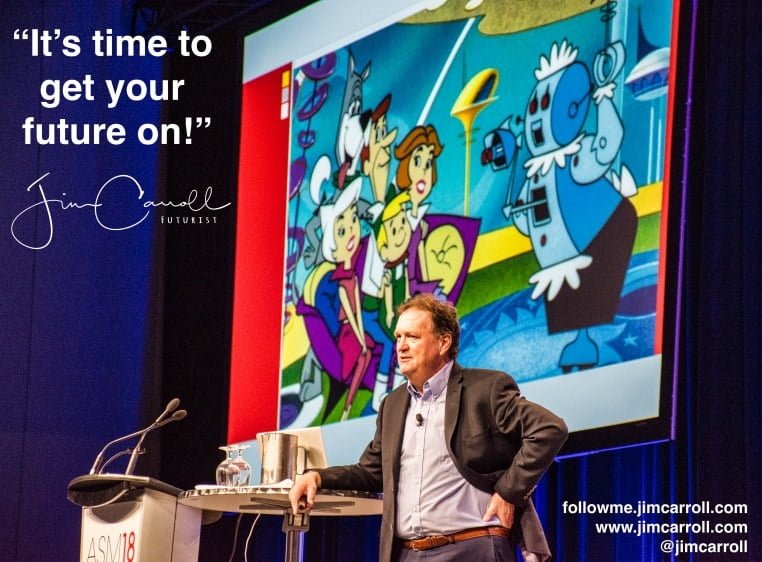
First, watch this. Zager and Evans is a bonus track.
Then, think about how each and every industry around you is going to change. All of these predictions are based on real, actionable trends which are happening right now.
Transportation: We’ve gone from driving cars and trucks based on carbon, gas and the internal combustion engine, to vehicles based on big batteries and computers. They mostly drive themselves, or do so in cooperative packs, talking to each other on a continuous basis with respect to traffic flow and other important matters. Cars have become, essentially, anticipatory data-sensing computers on wheels. The industry has changed as well: rather than a few car and truck manufacturers, there are hundreds, as the very form factor of the vehicle changed once we eliminated the carbon-gas engine – the arrival of battery-electric led to the emergence of all kinds of new competitors because the process of conceiving, designing and building a vehicle became much more straightforward. And the after-market parts industry has collapsed, as the average number of parts in a vehicle went from 46,000 in a carbon-gas vehicle down to a few hundred with battery-electric.
Healthcare: Rather than having a system of ‘sick-care’ that fixed people after things went wrong, we’ve transitioned a good part of the system to real ‘healthcare’ – anticipating what people are likely to become sick with. Based on that knowledge, we’ve realigned the architecture of the healthcare system to deal with health care issues on a proactive, rather than reactive, basis. How? Genomics, mobile devices, embedded in-body health sensors and real time analytical predictive health care dashboards led us to a world in which we could predict the emergence of particular health care issues and risks on a real time basis. This resulted in a fundamental re-alignment of resources to manage any particular issue – ‘disease management’ became a world of ‘disease action planning.’ We also rode the acceleration of science into a world of advanced ‘body part replacement surgery. Everything, from from kidneys to eyes, teeth implants to skin grafts, are now grown in labs for use in surgical and other medical procedures.
Insurance: We used to get insurance coverage based upon our historical behaviour or past actions. Now, insurance policies are written and adjusted in real time based on real time data and activities – so rather than looking back to assess and underwrite insurance risk, we increasingly do so by looking forward based on what we know right now. P&C, life and all other aspects of insurance have been dramatically impacted by the arrival of continuous real time risk monitoring technology! Not only that, but the very concept of risk has changed – we’ve learned that the faster arrival of the future means that we now see the faster emergence of new risk issues, which in and of itself requires different forms of risk assessment. This has led to shorter “instance oriented policies” – or what we might call “just in time insurance.” AI based risk assessment has also taken on a huge role, with the emergence of real time risk assessment dashboards.
Agriculture: Rather than farming when the sun is up, we’ve moved to a world of continuous 24 hour farming, aided by robotics, autonomous self-driving technology, and virtualized farming platforms based on Farmville concepts. The entire process goes by the name “real time spatial intelligence farming.” A continuous flood of new technologies has come into the industry, supported by the arrival of the tech-generation who has taken over the family and industrial farm: things such as weed zapping laserbots, virtual tractors, drone seeding copters and more.
Retail: While we used to go to stores to get the stuff that we need, we now find that the majority of stuff comes to us via a wide variety of automated, intelligent last mile delivery technologies – delivery bots, automated drones and more. Most homes now have drone pads on their driveways and robotic storage lockers that safeguard the product after delivery. When you actually do go out to get things, your car takes care of much of the process – it has become a shopping cart with credit card payment technology built in. Malls? They’ve become become museums if not just entertainment hubs – the entire focus for commercial retail real-estate has evolved to logistics hubs, shipment warehouses, drone-ports and more.
Cities and towns: Massive urbanization has taken hold, with 70% of the earths population now scattered into about 40 megacities. This has driven the arrival of all kinds of fascinating new trends and industries that are based on people living in close proximity. A good example is vertical farming, or in-city farming: it’s everywhere, and involves 100 story skyscrapers that are used to grow food. Water is recycled, plants grow 24 hours a day under lights, and self-contained resource reuse drives down the cost of food production. Mega-city innovations continually drive forward new trends, concepts and ideas in all other parts of the world, and become a key source for innovative, transformative ideas.
Construction : We used to send people and materials to a site in order for a building to be assembled. Now, we generally assemble the building offsite with robotic technology and 3D printing technologies, and send it to the site for final quick, fast assembly. Essentially, we’ve gone from building homes on site to building them in factories. AI and robots drive this manufacturing process – brick laying robotic masons are everywhere, as is the ability to 3D print in concrete. We’ve also seen the continual arrival of all kinds of new material science and new concepts – solar energy generating windows, anticipatory smart building technology and more.
Education: We’ve gone from the concept of “foundational degree knowledge” to just-in-time knowledge – most people in the workforce have now mastered the skill of getting the right knowledge at right time for right purpose. The concept of the career has disappeared as most people transition from project to project at an absolutely furious pace – there is a continuous arrival of new careers, the rapid obsolescence of old careers, and the fleeting arrival of short term “micro-careers.” We used to train for a career that would take us through most of our life. Now, we live a life that takes us through multiple careers – by constantly reinventing ourselves. The education industry has figured out how to build platforms for the delivery of knowledge that does not yet exist for careers not yet invented – in essence, designing knowledge delivery for what comes next in a world of great knowledge uncertainty!
Energy and utilities : We’ve moved from a world of centralized energy production based on big facilities generating from carbon and nuclear, to a massively distributed architecture based on the input of millions of small, local renewable energy resources. We’ve gone from essentially dumb, one-way grids to highly intelligent two-way smart grids that feature accelerated load balancing – they support millions of production and input sources. The architecture of the grid itself has changed – for example, most cars and trucks have now become a part of the energy grid through vehicle-to-grid battery connectivity, storing energy during off peak hours and feeding it back into the grid later on. Most utilities have also found themselves operating in the highway and road-building industry, as electrified roads and charging infrastructure appeared everywhere to support a world that involves a majority of electric-battery vehicles. We continued to see dramatic faster decline in renewable energy cost due to the acceleration of the computer technology involved, as well as the payoff from massive investment in battery technology at the start of the decade.
Food: We used to eat the same food that everyone else ate. Now, we eat food that is grown specifically for our particular DNA, and matched to our particular metabolic profile, based upon real time insight from monitoring technology built into our smart phone and clothing. A world of continuous body and health monitoring has appeared, driven by the idea that the glycemic index of an apple for one person is entirely different from that for someone else. We’ve gone from from food manufactured for mass consumption to food that is personalized based on the ideas of mass customization! Many consumers have a one-to-one relationship with distant and local food production companies and the agricultural community based on hyperconnected plants and animals. 3D printed food is found within most homes, leading to a renaissance and explosion in new menu concepts and taste sensations. The explosion of vertical farming in agriculture has also led to the mass addition of in-home food production technology.
Manufacturing: We’ve transitioned from a world of mass production, with millions of products that are all the same, to one of mass customization, based on 3D printing, advanced materials, agility-based manufacturing methodologies and iterative, regenerative product design concepts. End-of-runway manufacturing and the end of the concept of inventory has taken hold as additive manufacturing concepts now permit the production of a lot of products closer to the consumer. This has resulted in a massive reduction in the cost of shipping and transportation – the concept of ‘inventory on hand’ has come to an end, and supply chain ideas have been turned on their head.
Clothing and fashion: The arrival of smart, connected, intelligent clothing led to marriage of fashion, healthcare and wellness. New fibres and textiles that are smart now link into the data-grid around you, adjusting their warmth and cooling cycles based upon real time information analysis. New textile science has also led to clothing that evolves it’s form and function based on local conditions – clothing that cools with built-in refrigerant technology and coats that warm you through smart carbon-fiber heating tech. Not to forget that glasses, contact lenses and other health related fashion items have become increasingly integrated into your overall ‘clothing infrastructure,’ a phrase that took on increasing importance through the decade with the arrival of all this smart-clothing.
Highways and infrastructure: They’ve become smart, intelligent, connected. Your self-driving car doesn’t just drive itself, but talks to other vehicles around it, to sensors embedded in the road, and to light poles and other road-tech that helps to guide it on its voyage. Amazon and other disruptors now provide for pay-per-access to the best route based on real time embedded road-sensor technology. Not just that, but the very roads themselves charge the batteries of the cars that drive on them – but you have to pay a premium to do so.
Financial services: We used to take out mortgages and loans to acquire the things we wanted, but now we simply get the things that we want for but a short time, and then move on to the next thing. We generally just share the stuff that we need rather than purchasing it for the long term. The result is that most banks are now just short term lending institutions. The concept of cash has also disappeared, but die-hards are still talking about BitCoin as the ‘next big thing’ (But that went by the wayside when the UN outlawed cyber-currency because of the massive environmental damage that occurred through the energy resource usage that was required to support it!)
Hi-tech and technology. We used to have things called computers, which were physically separate devices that we carried around or plopped on our desk. Now, intelligence is embedded everywhere; in our clothing, eyeglasses, cars, homes and factory. It’s just there. We don’t even think about it much anymore, except when some hacker re-programs our 3D-food-printer and serves us up anchovy-flavoured jello as a joke. When it comes to bandwidth, yottabit capacities have arrived – look it up!
Material science and chemical industries: We used to have 19 million known chemical substances, but now we have some 5 billion. We witnessed the birth of countless new industries and opportunities through the rapid acceleration of pure science. Mines were mined automatically with virtual robotics, and materials were engineered from constituent materials closer to their final destination. Africa was reborn as the birthplace fo the modern economy, as the raw materials used for electric vehicles and other industries led to massive resource boom.
Legal and professional services: The world of law and other professions is now driven by the acceleration of legal risk and hyper-complexity. This came about as the result of the rapid emergence of new risk, an era of ‘hyperconnected, shared risk’, more complex – and faster – corporate partnership risk, and other factors that came about as the result of faster economy. IP or intellectual property issues went through the roof in terms of complexity as AI came to drive the discovery of new ideas, new knowledge, and new products – who owns the output of a computer generated mind-idea?
Sports, fitness and recreation: A simple wooden baseball bat now exists only in a museum : the baseball bat of 2030 is now wirelessly connected to a web cam that automatically records a player’s swing style and speed. Kids live in a widely interactive world in which they are aware of all sports results and actions instantly through an online connection. Skis and boards are hi-tech snow devices, providing coaching direction and real time route planning. Sports coaches have immediate access for coaching purposes. Golf? Every golf ball has a Webcam, and sharing your ace in an instant with a birds eye view of its path is a common reality – for those lucky enough to have a hole in one.
Entertainment and media: The explosion of deep-fake technology in the early part of the decade made redundant the concept of CGI technology in film and media: instead, stock-footage of ready-to-fake video exists online. Actors have mostly become irrelevant – instead, avatars are ready off the shelf, ready to be turned into the next great performance. We began to see the arrival of virtualized entertainment business models, with technology leading to highly customized, just-for-one entertainment productions based on the rapid assembly of this deep-fake inventory – the ability to create your own personal version of a movie with your own unique storyline became a part of the new world of entertainment.
The Unknown Industry: Last but not least, we saw the emergence of a new industry that we simply could not conceive of, and which did not exist on January 1, 2020. That’s because some companies appeared that made products or services that did not exist, based on ideas and concepts that weren’t yet around, with methodologies that had yet to be invented, using material not yet invented. We were in awe of the concepts that appeared with the birth of this massive new, mutili-trillion dollar industry.
Are you ready for this future? If not, you should be!
I spend my life helping people to comprehend what comes next. Each and every day, I put out some sort of motivational, future oriented quote to get you into the right frame of mind – that matters. You’ll find more of them over in the Daily Motivation section of my Web site.








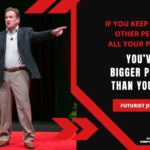




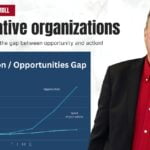




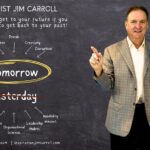





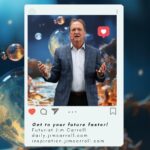









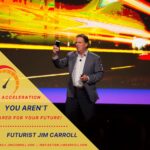

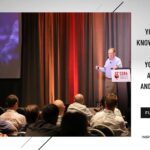





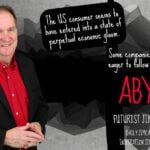






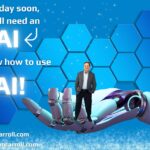
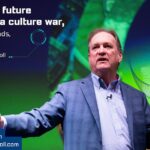






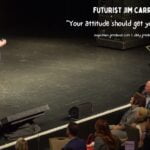


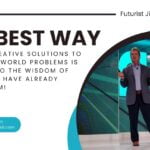

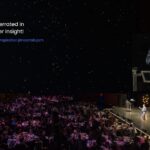

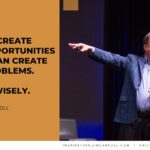
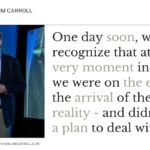
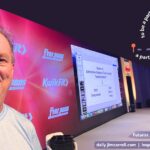


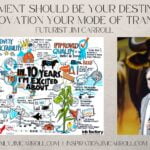


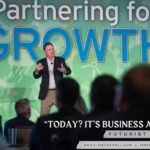




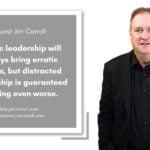



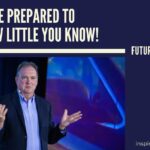

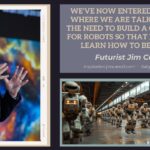


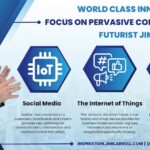
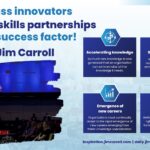
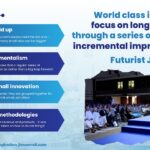
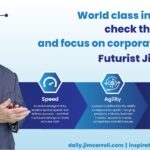
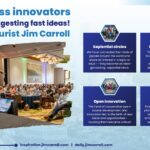
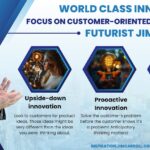
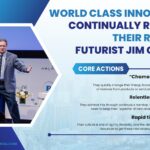














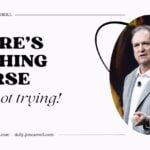






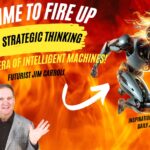













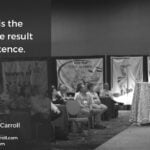

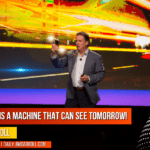



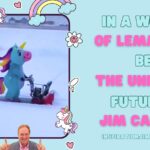











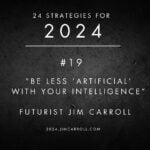

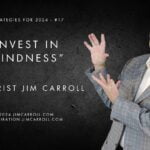
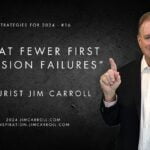

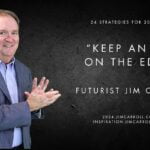
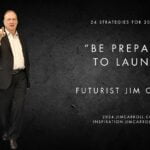
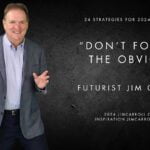
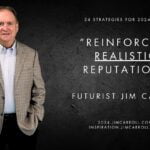
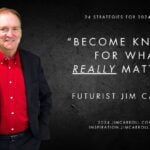




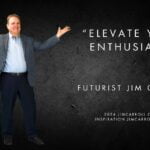








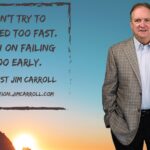









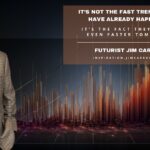

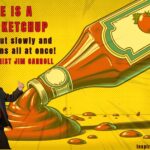


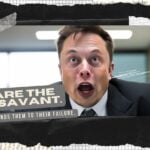


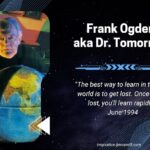


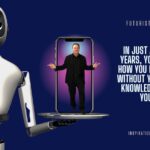



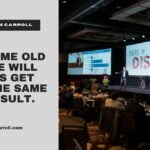




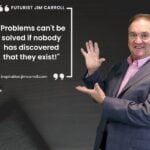



GET IN TOUCH
Jim's Facebook page
You'll find Jim's latest videos on Youtube
Mastodon. What's on Jim's mind? Check his feed!
LinkedIn - reach out to Jim for a professional connection!
Flickr! Get inspired! A massive archive of all of Jim's daily inspirational quotes!
Instagram - the home for Jim's motivational mind!